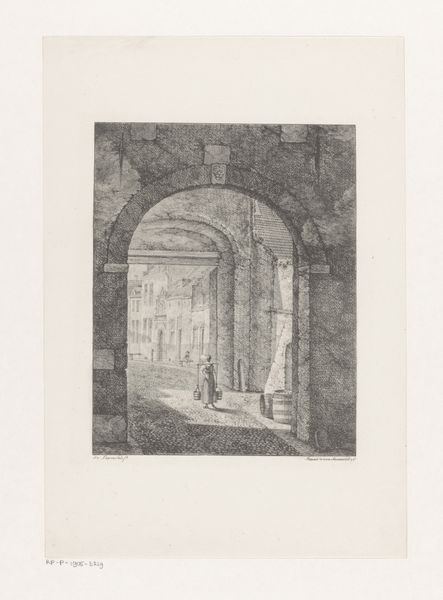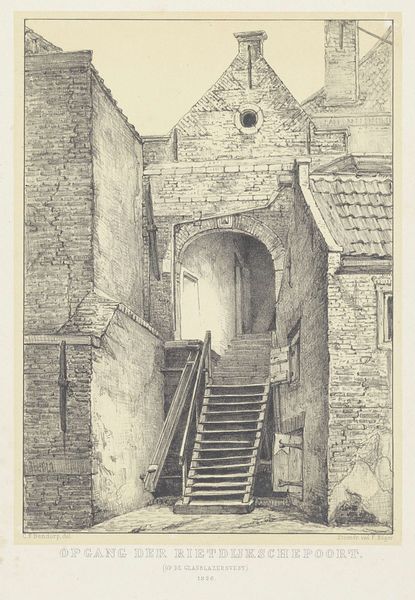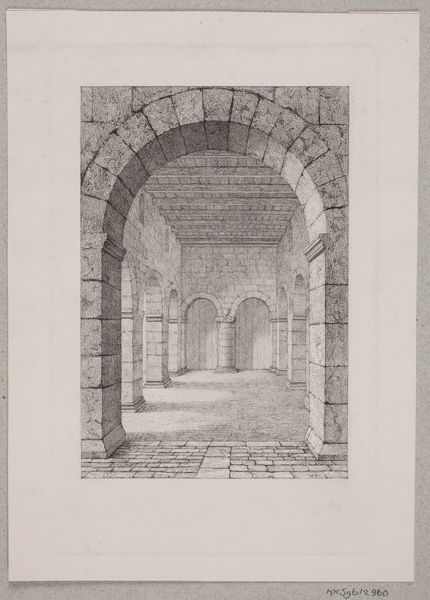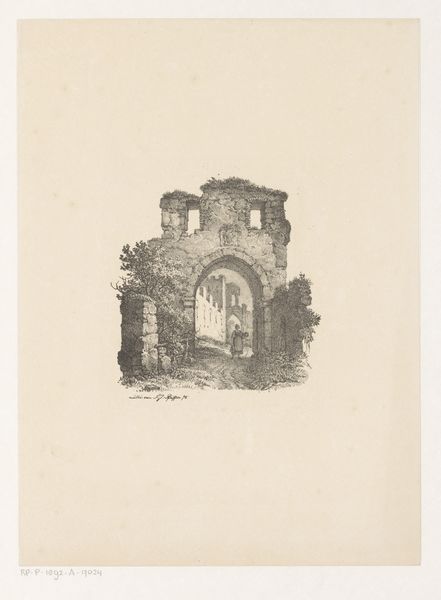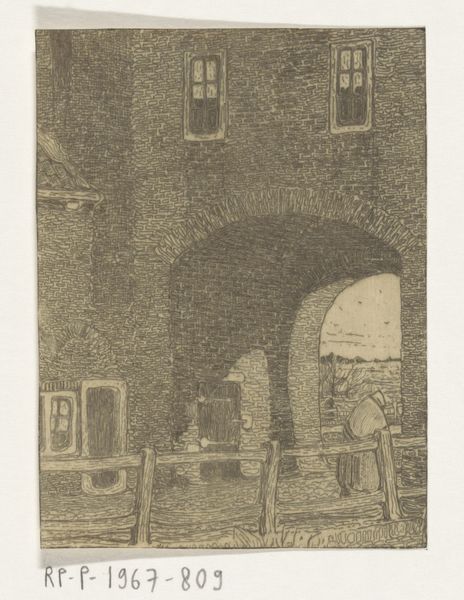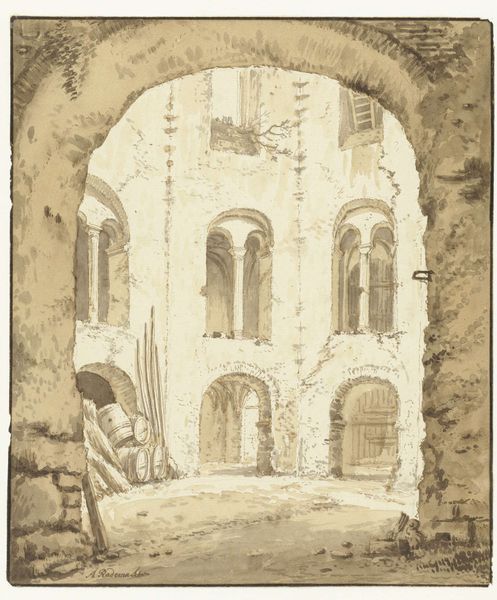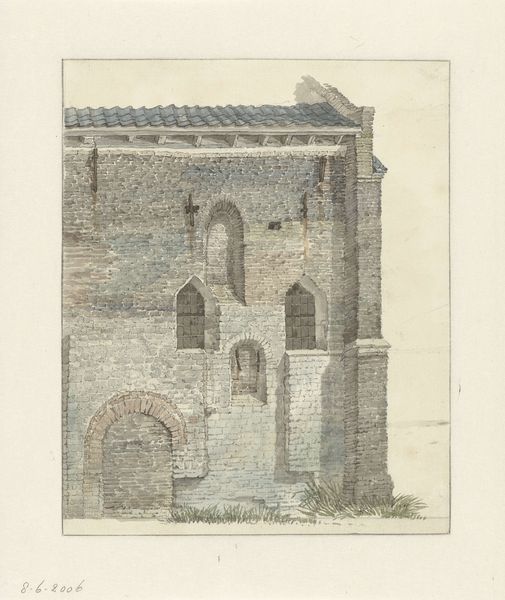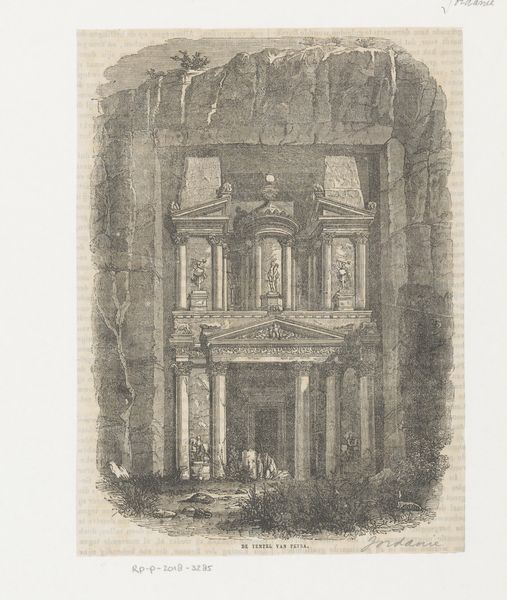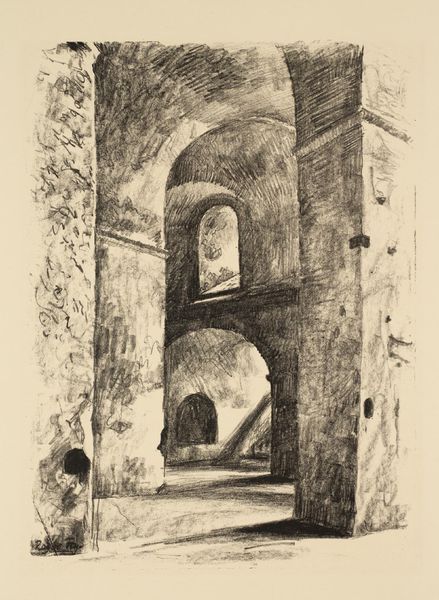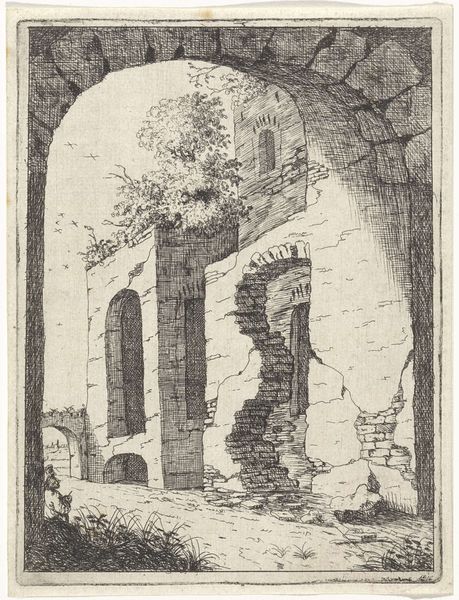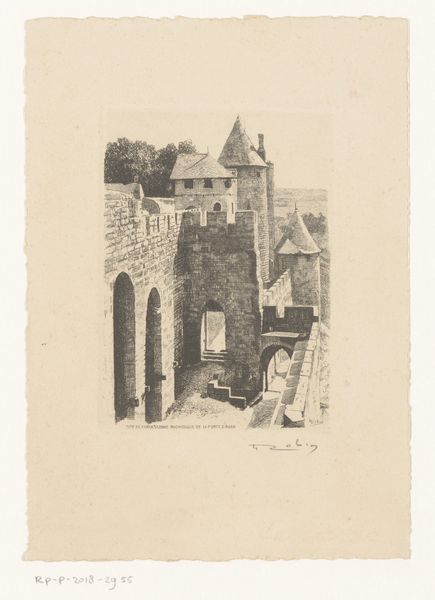
drawing, print, etching, engraving
#
drawing
#
medieval
# print
#
etching
#
landscape
#
etching
#
romanesque
#
pencil drawing
#
geometric
#
engraving
Dimensions: height 303 mm, width 230 mm
Copyright: Rijks Museum: Open Domain
César de Cock created this drawing of the crypt of Saint Bavo's Abbey in Ghent, using graphite on paper. We see here an architectural rendering of a ruined sacred space, likely made sometime in the mid-19th century. Belgium’s complicated religious history and the rise of secularism provides a relevant backdrop. The Abbey itself had been dissolved during the French Revolution. The drawing’s medium, graphite, allowed for precision and detail, aligning with the scientific and rational spirit of the 19th century. It is likely that the drawing was commissioned or created for archival purposes. The interest in ruins aligns with the Romantic movement's fascination with the past, and with the sublime power of nature over human creations. But it also reflects a broader cultural concern with historical preservation, and the role of institutions in shaping collective memory. Further understanding might come from archives, architectural records, and studies of 19th-century Belgian art and cultural history. The meaning of the image is contingent on its social and institutional context, a testament to the power of historical inquiry in interpreting art.
Comments
No comments
Be the first to comment and join the conversation on the ultimate creative platform.

